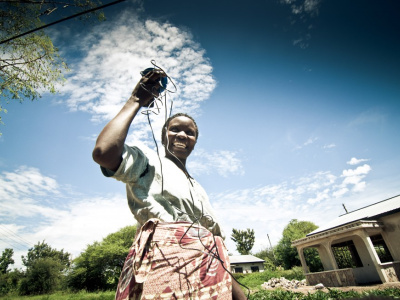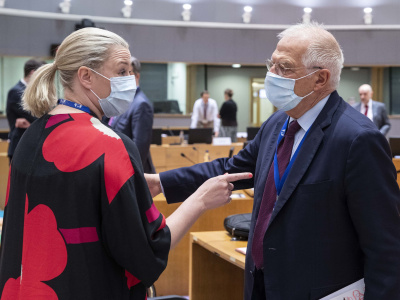
Cautious optimism for regional integration in sub-Saharan Africa
This article is a revised version of a summary chapter in the World Bank report: Political economy of regional integration in sub-Saharan Africa. The report finds that regional integration in this area is more successful than one would expect given the difficult setting in which it takes place.
Regional integration in sub-Saharan Africa (SSA) is crucial for increasing trade within Africa, building more competitive African economies, and creating larger markets for goods and services produced in the region. Yet there are many paths towards greater integration, some of which are easier than others. In addition, integration need not follow a linear path or occur mainly through formal inter-governmental economic coordination. In order to gain insights into how regional integration is occurring in SSA, determine impediments to it, and develop recommendations for how the World Bank and other development agencies can help further facilitate it, the World Bank commissioned a set of political economy of regional integration studies covering sector analyses of agriculture, financial services, professional services, trade facilitation, and transport. In a comparative context, the findings of the studies suggest cautious optimism for regional integration efforts in sub-Saharan Africa. They also question perceptions that regional integration in SSA is doomed to be less successful than in other parts of the world. Economic integration is typically difficult, especially among less developed economies. In addition, failed integration attempts and slow implementation of integration policies is a global pattern, not only an African one. As in other parts of the world, we find that efforts at integration are more likely to succeed when they have strong internal support among the governments and/or private sectors of the member states as well as take a pragmatic and flexible path to integration rather than a rigid and all-encompassing one. There is no question that it is these factors that are behind recent progress in regional integration in SSA. Similarly, economic integration is more likely to succeed when it occurs alongside regional attempts at improving political stability and/or developing joint infrastructure. We see evidence of this in sub-Saharan Africa as well. For these reasons, arguably, regional integration in sub-Saharan Africa is perhaps somewhat more successful than one would predict given the challenging environment in which it is occurring. The studies also show that sector- and issue-specific characteristics strongly influence the pace and complexity of integration efforts. Most prominently, some areas require far more government action than others. For example, efforts to improve regional transport infrastructure and regional trade facilitation require policy coordination among a large number of government agencies. By contrast, consumer-facing sectors, such as finance, do not need such harmonisation to operate regionally. Rather, they can adapt to the host-country regulations. For these reasons, it is not surprising that integration is happening much faster in consumer retail than in other sectors or policy areas. The studies suggest the World Bank and other international development organisations could engage in useful efforts to facilitate greater integration efforts. A few recommendations are listed below.
The pessimistic view that regional integration can only play a limited role in Africa because of relatively small size and similarity of endowments between countries is still common. Our studies challenge this conventional wisdom. It is becoming increasingly apparent that there is enormous scope for increased cross-border trade and investment in Africa. Moreover, with rising incomes in Africa there are growing opportunities for cross-border trade in basic manufactures, such as metal and plastic products, and processed food that are costly to import from outside the region. The potential for regional production chains has yet to be exploited and cross-border trade in services offers similarly untapped opportunities. The full study is available at http://ecdpm.org/wp-content/uploads/Political-Economy-Regional-Integration-SSA-World-Bank.pdf About the authors Paul Brenton is Lead Economist, Trade and Competitiveness Global Practice, at the World Bank, and Barak D. Hoffman is Public Sector Specialist, Governance Global Practice, at the World Bank.
This article was published in GREAT Insights Volume 5, Issue 4 (July/August 2016).
Pathways to integration
Regional integration in sub-Saharan Africa (SSA) is crucial for increasing trade within Africa, building more competitive African economies, and creating larger markets for goods and services produced in the region. Yet there are many paths towards greater integration, some of which are easier than others. In addition, integration need not follow a linear path or occur mainly through formal inter-governmental economic coordination. In order to gain insights into how regional integration is occurring in SSA, determine impediments to it, and develop recommendations for how the World Bank and other development agencies can help further facilitate it, the World Bank commissioned a set of political economy of regional integration studies covering sector analyses of agriculture, financial services, professional services, trade facilitation, and transport. In a comparative context, the findings of the studies suggest cautious optimism for regional integration efforts in sub-Saharan Africa. They also question perceptions that regional integration in SSA is doomed to be less successful than in other parts of the world. Economic integration is typically difficult, especially among less developed economies. In addition, failed integration attempts and slow implementation of integration policies is a global pattern, not only an African one. As in other parts of the world, we find that efforts at integration are more likely to succeed when they have strong internal support among the governments and/or private sectors of the member states as well as take a pragmatic and flexible path to integration rather than a rigid and all-encompassing one. There is no question that it is these factors that are behind recent progress in regional integration in SSA. Similarly, economic integration is more likely to succeed when it occurs alongside regional attempts at improving political stability and/or developing joint infrastructure. We see evidence of this in sub-Saharan Africa as well. For these reasons, arguably, regional integration in sub-Saharan Africa is perhaps somewhat more successful than one would predict given the challenging environment in which it is occurring. The studies also show that sector- and issue-specific characteristics strongly influence the pace and complexity of integration efforts. Most prominently, some areas require far more government action than others. For example, efforts to improve regional transport infrastructure and regional trade facilitation require policy coordination among a large number of government agencies. By contrast, consumer-facing sectors, such as finance, do not need such harmonisation to operate regionally. Rather, they can adapt to the host-country regulations. For these reasons, it is not surprising that integration is happening much faster in consumer retail than in other sectors or policy areas. The studies suggest the World Bank and other international development organisations could engage in useful efforts to facilitate greater integration efforts. A few recommendations are listed below.
- Prioritise flexibility over rigidity
- Encourage simplicity over complexity
- Reach out to the private sector
- Focus on joint infrastructure
Untapped opportunities
The pessimistic view that regional integration can only play a limited role in Africa because of relatively small size and similarity of endowments between countries is still common. Our studies challenge this conventional wisdom. It is becoming increasingly apparent that there is enormous scope for increased cross-border trade and investment in Africa. Moreover, with rising incomes in Africa there are growing opportunities for cross-border trade in basic manufactures, such as metal and plastic products, and processed food that are costly to import from outside the region. The potential for regional production chains has yet to be exploited and cross-border trade in services offers similarly untapped opportunities. The full study is available at http://ecdpm.org/wp-content/uploads/Political-Economy-Regional-Integration-SSA-World-Bank.pdf About the authors Paul Brenton is Lead Economist, Trade and Competitiveness Global Practice, at the World Bank, and Barak D. Hoffman is Public Sector Specialist, Governance Global Practice, at the World Bank.
This article was published in GREAT Insights Volume 5, Issue 4 (July/August 2016).

